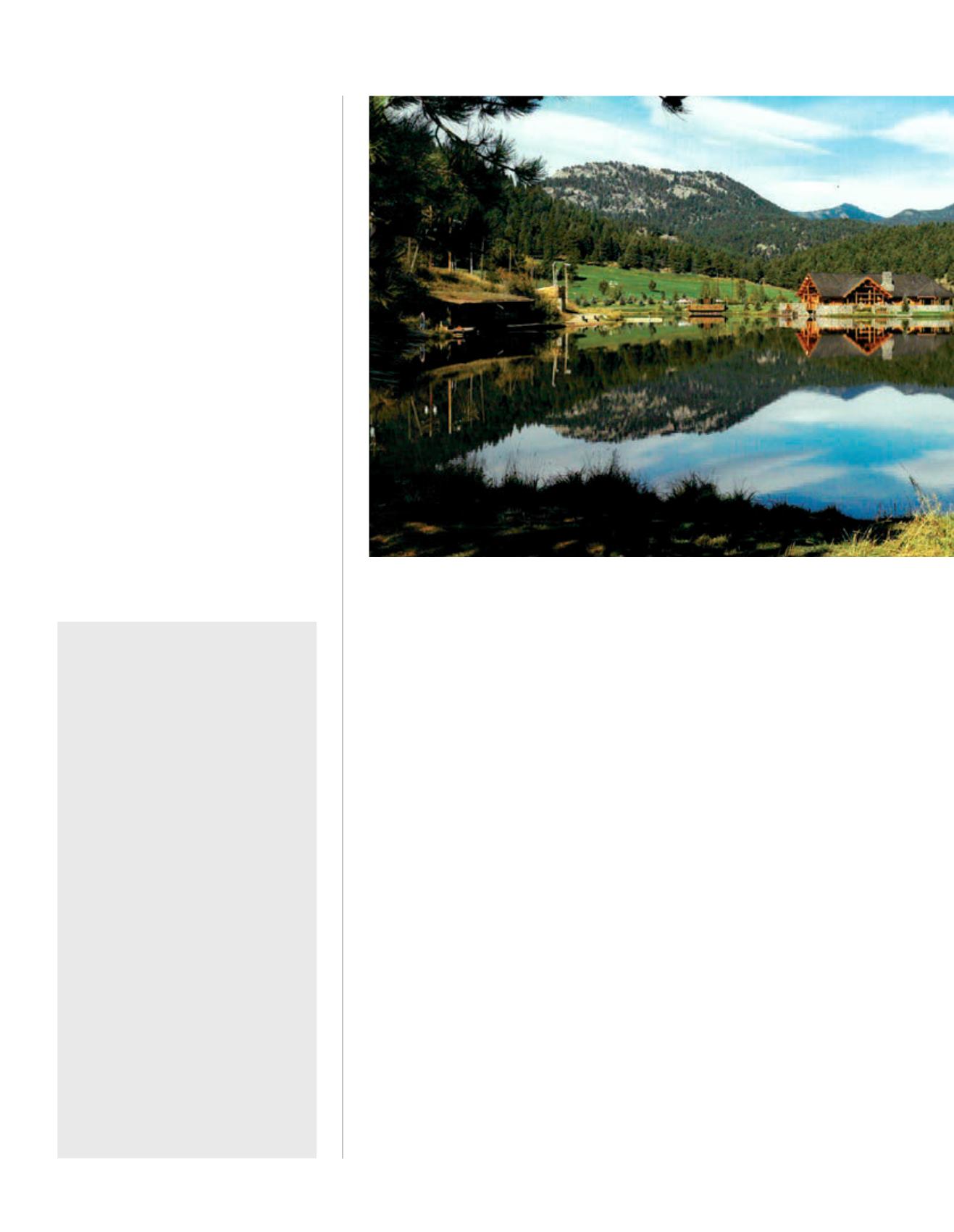
114
/ BUILDING DIALOGUE / SEPTEMBER 2016
/ Building a Legacy /
long-standing internal culture that fosters architectural exploration and excel-
lence; engaged discourse and collaboration; staff mentoring and advancement;
and a community service ideal considered so important that it is built into the
firm’s business model.
“Bob’s always had the desire to use our profession for positive change. The
idea of socially relevant architecture has been near and dear to his heart since
he began his career 46 years ago and, as a firm, we continue to focus on projects
that allow us to do that,” says MOA President Barry Koury, AIA, LEED AP. “Our
work centers are creating spaces in which people work, play, learn and heal.”
Outland’s inherent appreciation for people and how they need and want
to interact within the built environment has led MOA to fascinating projects
launched from collaborative, unconventional thinking. For example, as director
of Native American architecture, one of MOA’s core specialty areas, Outland has
directed projects that speak to a special community. He has a particular affinity
for tribal issues – he is himself an enrolled member of the Choctaw Nation of
Oklahoma, the third largest tribe in the United States.
MOA’s carefully considered design of circular shapes, commonly respected
symbols and earth-sky relationships handily won the firm the University of
Colorado Health Sciences Center’s Nighthorse Campbell Native Health Facility
project, which went on to win design awards. Another building, a senior living
center on the Cheyenne River Sioux Indian Community in South Dakota, is
shaped like a medicine wheel, which symbolizes all creation and life cycles.
Outland’s zeal for interpreting clients’ highly individualized visions into real
buildings, and his knack for fostering a team of technically talented, progres-
sive thinkers, paved the road for MOA’s 35 successful years, despite numerous
economic potholes in the business climate along the way. Buffeted by an oil
bust soon after the firm opened in 1981, Outland quickly learned how to be
nimble, tuning his business to the times.
“Bob’s idea that creative, collaborative thinking will make us better tomorrow
than we are today has certainly paid off many times, especially in the reces-
sion of 2007,” Koury explains. “Other firms were downsizing their staff, but Bob
challenged MOA’s leadership to think and behave differently than other firms,
and even as we ourselves had in previous recessions. That resulted in making
investments in our future, such as expanding the business into Wyoming and
OPENING ART:
Robert Outland
Photo courtesy
Laura Mahony Photography
RIGHT:
Evergreen Lake House,
designed by MOA
FAR RIGHT:
The DaVita building features a light-
filled design with “jaw-dropping”
views of the Front Range.
Photo courtesy Frank Ooms Photography
BobOutland at a glance, through
his work, values and leadership
Familiar Facades:
During Out-
land’s tenure, MOA designed
many of the Denver Metro’s most
familiar structures, such as the
Evergreen Lake House and the
Westminster City Hall.
Giving by Design:
An Outland
initiative, this program allocates
time, resources and a percentage
of company profits each year to
support community and char-
itable projects. Among the past
recipients: The Governor’s Resi-
dence Preservation Fund, Den-
ver Public Schools, Cleworth Ar-
chitectural Legacy program, the
Women’s Foundation of Colora-
do.
Scholarship:
For years MOA has
actively supported the training
of future architects and design-
ers through paid internships and
scholarships. The entire com-
pany engages in the annual se-
lection of student recipients for
the Kiyoshi Murata Scholarship
and Internship and the Robert
Outland Women and Minority
Scholarship and Internship.


